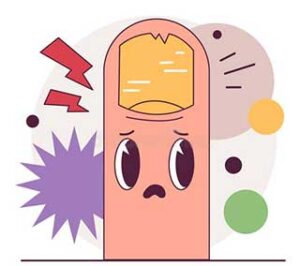Candida – An infectious disease caused by yeast-like fungi belonging to the genus Candida. Candida enters the normal microbial flora of the body, even in perfectly healthy people, and multiplies without causing any harm. Under favorable conditions, the fungus begins to multiply and provokes the development of various disorders.
Candidiasis includes different types of infections, ranging from the most superficial to the systemic level. Superficial infections caused by Candida are responsible for local inflammation, which is often associated with severe discomfort. Rare but more dangerous systemic infections that can cause complications such as lung abscesses, endocarditis or meningitis.
Contents
Types of candidiasis
The body’s defenses, the natural intestinal and vaginal flora normally inhibit the growth of Candida albicans. As a rule, there are no unpleasant symptoms that indicate its presence in the body. The fungus becomes active when the body’s resistance decreases.
The following factors contribute to the development of candidiasis:
- Prolonged or uncontrolled use of antibiotics,
- Diabetes mellitus and other endocrine disorders,
- Hormonal changes during pregnancy and menstruation;
- Weakened body defenses or infectious diseases.
Table – Types of candidiasis, causes and symptoms
Unprotected sexual intercourse;
Use of towels or underwear of an infected person;
imbalance of the vaginal or intestinal bacterial flora;
Washing intimate areas with aggressive products;
Use of too tight or nylon underwear;
Signs of vaginal candidiasis are the appearance of severe itching on the mucous membrane of the genitals, irritation and swelling, burning when urinating. There is also discomfort during sexual intercourse.
Occurs as an acute or chronic inflammation and leads to frequent relapses. The causative factors are the irrational use of antibacterial drugs and the pathological course of the newborn period. Symptoms of thrush in the mouth in a child can appear against a background of intestinal infections, reduced immunity and trauma to the mucous membrane.
Symptoms of oral candidiasis consist of the appearance of plaque on the mucous membrane of the oral cavity, as well as redness and swelling of the back of the tongue. In advanced cases, there is redness and infiltration of the lips, the presence of erosions and severe pain. Small cracks are covered with a grayish-white film.
When local and general immunity is weakened, Candida fungi attach to the intestinal epithelium, then penetrate its thickness and become filamentous. With severe suppression of cellular immunity, candida enters the bloodstream and spreads throughout the body, leading to visceral candidiasis (damage to the liver, pancreas).
signs of severe intoxication;
increase in body temperature;
severe abdominal pain;
Fluid stool with blood admixture.
Diagnosis of candidiasis
Mildew in the mouth in adults and children is diagnosed only if a combination of characteristic clinical manifestations and positive additional examination results. For genital lesions, appropriate examinations are performed in the office of a urologist and a gynecologist.
The diagnosis of candidiasis includes the following tests:
- microscopic examination of mucous membranes;
- Serological reaction (determination of antibodies);
- polymerase chain reaction.
Based on the results, a diagnosis is made and an individual treatment regimen is prescribed. Self-treatment in this case is inadmissible, since it creates optimal conditions for the development of pharyngococcosis. к. may lead to the development of complications.
Treatment of candidiasis
Treatment of oral candidiasis is carried out on several fronts:
- identification of risk factors and their elimination (treatment of background diseases);
- Antifungal therapy (in the presence of clinical signs of candidiasis);
- desensitizing therapy;
- Restoration of the oral microbiocenosis;
- immunity strengthening.
Antifungal therapy is the first step in treating patients with candida stomatitis. The most commonly used topical forms – Solutions, gels, aerosols, creams, etc. A similar approach is used in the case of genital lesions.
We offer a list of effective drugs for the treatment of candidiasis. The rating is based on the safety of the medicines and the price-quality ratio. Advance consultation with your doctor – The key to a speedy recovery.

